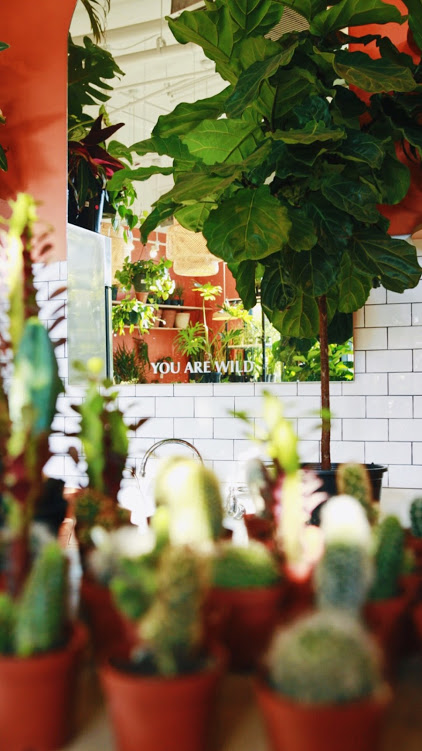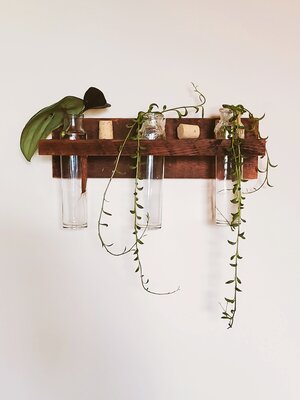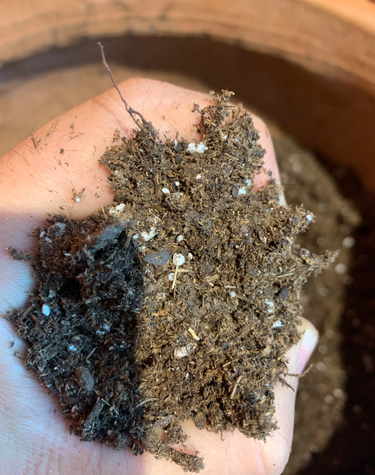
Understanding Your Lighting
Lighting should be the first consideration when selecting your next plant. If you’ve identified the place you’d like to see a plant, you’ll want to understand the kind of light that spot receives and choose accordingly.
If you’re starting with your plant and deciding where to place it, you’ll want to decide according to the light in your space.
Below we’ll help you decode the terminology of lighting, and equip you with the knowledge to evaluate the light in your own space.

Most of the plants we carry will be happiest in “bright indirect light”. But a lot of our clients ask us to explain what exactly that means. So let’s break down the various types of lighting:
Direct Light: If your plant had eyes and could see the sun with them from its position, that plant would be receiving direct light. This is usually found in the immediate vicinity of a window.
Indirect light: It’s bright in the space where your plant is placed, but a direct line cannot be drawn from the sun to the plant. This is usually found beside a window or on the same side of the room as the windows.
Low light: Low light is residual light that comes in from another room or from the opposite end of the room from position of the plant.
No light: Your plant is in a space with no windows, no residual light from outside the room. Very few plants will thrive in this condition, so you might want to look into plant lights or LED lights.

Nautical Directions
The first thing you’ll want to know is what direction your exposure is coming from at each of your windows. If you see a sunrise or have strong morning light from one window, that is Eastern exposure. Eastern light is the most concentrated light of the day. If you see a sunset or have strong light later in the afternoon, that is Western Exposure. This is a gentler but still direct light. Southern exposure will result in both Eastern and Western Exposure, as you should see the sun’s path throughout the course of the day. While the sun rises in the east and sets in the west, if you’re living in North America the sun will make that journey slightly south. If your window faces North, it will receive no direct light throughout the course of the day.
Here in our shop, our windows face West, so we enjoy a beautiful golden hour every afternoon.
Seasons
Bear in mind that the number of hours of daylight fluctuate throughout the course of the year. As we enter winter and there are less hours of sun per day, your plants enter a period of dormancy during which time you’ll want to restrict watering and feeding them. ( Note: please also account for the humidity of your home. You might find that your watering habits won’t change due to the dryness of your space. This is why it’s always important to test the soil for dryness throughout the year to understand the rhythms of your plant.)
The sun’s path stays lower in the sky, closer to the horizon line in the winter. In the summer, its path is higher toward the center of the sky. So the directness of your light may change as well.

Positioning your plant
The vast majority of the plants we sell will be happiest in “bright indirect” light. This positioning is typically somewhere in the half of the room closest to the windows. We describe the quality of bright indirect light as being bright enough to comfortably read during the day with no lights or lamps turned on. Many of our plants can handle limited amounts of direct light, but we recommend graduating the plant to this kind of light by gradually moving it closer to the light source every few days.

One exception to this rule is succulents and cacti. Many can thrive in bright, indirect light, but they’ll have their best chances next to the window or on the windowsill. When these plants are receiving insufficient light, they get very tall and long and their leaves get smaller. Cacti do this too, turning into something resembling a garden gnome hat! Here in DC, we have to take extra measures to keep our succulents and cacti happy, meaning all the light we can spare and very infrequent watering, about every 2-4 weeks depending on the time of year. You’ll also want your succulents potted in a well-draining soil mix (which we’ll pot for you if you purchase from us!), and in a well draining pot with a hole, ideally an unfinished clay or Terracotta.
Low light isn’t ideal for any indoor plants, but there are many that will tolerate lower light and thrive in it. These include Snake Plants, ZZ Plants, Aglaonemas, and even Pothos. It’s important to water even less when a plant is receiving limited light. Light helps drive the photosynthesis process, allowing your plant to metabolize the water you give it.
For more information about watering your plant, see our blog post on watering.



Leave a comment
This site is protected by hCaptcha and the hCaptcha Privacy Policy and Terms of Service apply.